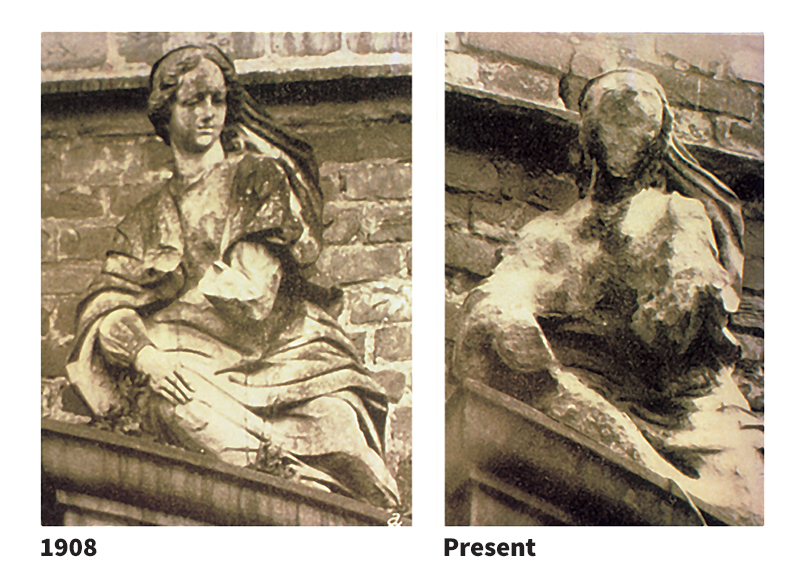Oxide << OK syd >> is a chemical compound of oxygen with some other element. Oxides are commonly formed when the elements are oxidized by oxygen in the air. For example, burning the carbon present in coal or wood gives carbon dioxide and carbon monoxide. Burning is rapid oxidation. Carbon dioxide is also formed by slow oxidation processes in animal cells, and it is exhaled from the lungs. The rusting of iron is slow oxidation. Rust contains ferric oxide.
Metallic oxides commonly combine with water to form basic hydroxides, while nonmetallic oxides with water form oxygen acids. The oxides of sulfur and nitrogen are used to form sulfuric and nitric acids.
Sulfur dioxide and nitrogen oxides pollute the air when given off by automobiles, by factories, and by power plants that burn coal or oil. They also mix with moisture in the air to form sulfuric and nitric acids, which fall as acid rain (see Acid rain ). Acid rain damages plants, wildlife, and certain building structures.

Calcium oxide is quicklime. When mixed with water it forms the slaked lime used in whitewash and plaster. Sand, which is important in glassmaking, is one form of silicon dioxide, called silica. Other forms of silicon dioxide are quartz, onyx, and opal.
